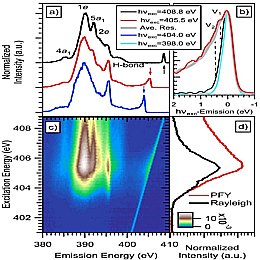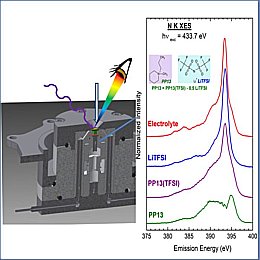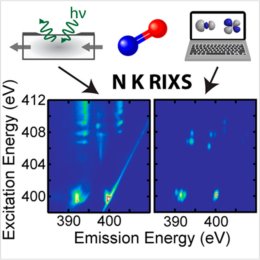Materials and Processes for Energy Technologies

Surfaces and interfaces play a crucial role for the function and performance of electronic devices such as batteries, solar cells, and catalysts. The electronic and chemical properties at these surfaces and interfaces often differ significantly from the bulk properties of the materials involved, particularly in the case of “real-world” (i.e., nonideal) systems, for which compositional gradients, diffusion, and intermixing play important roles.
We apply X-ray absorption spectroscopy (XAS, NEXAFS, XANES, EXAFS), photoelectron spectroscopy (PES), X-ray fluorescence (XRF), X-ray emission spectroscopy (XES) and resonant inelastic X-ray scattering (RIXS) to investigate the atomic-scale chemical and electronic structure of surfaces and interfaces in applied materials systems such as thin-film solar cells, catalysts, and electrochemical devices under operando conditions. We also apply these spectroscopic techniques to investigate aqueous & gaseous molecular systems. Current research topics include:
|
|
Next-generation thin-film photovoltaic devices • thin-film solar cells based on chalcopyrites, perovskites and kesterites as low cost and environmentally friendly photovoltaic devices |
|
|
Soft X-ray spectroscopy of materials for Li-ion battery applications • XES & RIXS applied to study electronic states related to the physical and chemical properties of Lithium-Nickel-Manganese-Cobalt-Oxide cathode materials for Li-ion cells |
|
|
Investigating molecular dynamics & bonding using in situ resonant inelastic X-ray scattering (RIXS) Investigation of electronic states and bonding in aqueous, ionic and molecular compounds. Examples include, e.g. nitric oxide (NO), which is important in many chemical and biological processes, including the formation of smog and acid rain, as well as the depletion of ozone in the atmosphere.
|



